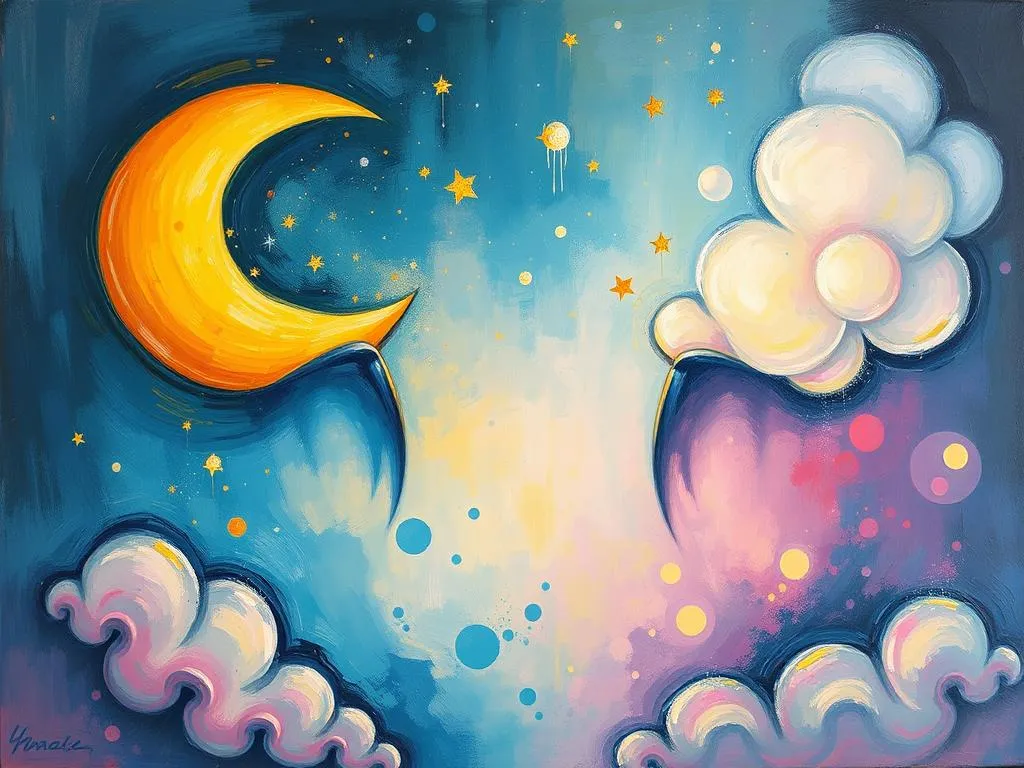
Introduction
Dreams have long fascinated humanity, serving as windows into our subconscious minds. They often reflect our deepest fears, desires, and unresolved conflicts, making them a rich tapestry for exploration. Among the myriad types of dreams, those involving opposites stand out due to their complexity and the intriguing dualities they present. Why do we dream of scenarios that juxtapose contrasting elements—like joy and sorrow, success and failure, or love and hate? Understanding these oppositional symbols can provide profound insights into our waking lives, revealing hidden meanings and guiding us towards self-awareness. As we delve deeper into the symbolism of opposites in dreams, we will uncover layers of meaning that can help illuminate our personal experiences.
Symbolism and Meaning
At the heart of dreams featuring opposites lies a rich array of symbolism that can vary significantly based on personal experiences and cultural backgrounds. Common symbols associated with oppositional themes include light and dark, high and low, and safety and danger. Each of these pairs can evoke a spectrum of emotions and thoughts, reflecting the complexities of our inner worlds.
For instance, the symbol of light often represents understanding, clarity, or enlightenment. Conversely, darkness can signify confusion, fear, or the unknown. When these symbols appear together in a dream, they may suggest a struggle between clarity and confusion in the dreamer’s life. Perhaps you are facing a decision where both paths seem equally alluring yet fraught with potential pitfalls. The presence of these opposites might indicate the need for balance—recognizing that both clarity and confusion are essential parts of the human experience.
Similarly, high and low can symbolize aspirations and fears. Dreaming of climbing a mountain (high) may signify a pursuit of success or personal growth, while stumbling into a deep valley (low) could reflect feelings of inadequacy or failure. The interplay of these symbols can reveal your current emotional state or even foreshadow upcoming challenges.
Another powerful opposite is safety and danger. A dream where you feel secure might represent a need for stability in your life, while a dream filled with peril could indicate underlying anxiety or unresolved issues. These contrasting feelings can encourage you to confront fears or embrace the changes that life throws your way. Understanding these symbols in depth can lead to a richer comprehension of your inner conflicts and desires.
Key Scenarios and Variations
The meanings of dreams featuring opposites can shift dramatically based on specific scenarios and variations. For instance, consider the dream of being chased—this common theme can morph depending on who or what is pursuing you. If you find yourself being chased by a friend (an opposite of the expectation of safety), it may suggest that you are grappling with feelings of betrayal or conflict in that relationship. However, if the pursuer is a shadowy figure, it could symbolize unacknowledged fears or aspects of yourself that you are trying to escape.
Another intriguing variation might involve the juxtaposition of environments. Imagine a dream where you are navigating a beautiful garden—lush and vibrant—only to find that it abruptly transitions into a barren wasteland. This stark contrast could indicate feelings of loss or dissatisfaction with something once cherished. The garden might symbolize a time of growth, joy, or abundance, while the wasteland could reflect current struggles or a sense of emptiness. This transition can urge you to reflect on what has changed in your life and how it affects your emotional well-being.
Consider also the scenario of flying high in the sky, only to suddenly plummet to the ground. This dream can embody the exhilaration of achievement (flying high) and the fear of failure (plummeting down). The dream may highlight your current emotional state, illustrating the highs and lows of your experiences. Such dreams often serve as reminders to remain grounded and to acknowledge the transient nature of both success and failure.
Finally, a dream about being in a warm, inviting home that suddenly becomes cold and unwelcoming could symbolize the duality of comfort and unease in personal relationships. It might suggest a shift in dynamics—perhaps a loved one has become distant, or you are wrestling with feelings of isolation. Recognizing these shifts can encourage you to communicate openly and seek understanding in your relationships.
Real-Life Connections and Takeaways
As we explore the rich symbolism of opposites in dreams, it’s essential to connect these insights to our waking lives. Reflecting on the emotions and scenarios presented in your dreams can deepen your understanding of your personal experiences. Begin by considering the emotions you felt during the dream. Did you experience joy, fear, confusion, or a mix of these feelings? Each emotion can provide clues to your current mental and emotional state.
Next, examine how the oppositional themes in your dreams relate to real-life situations. Are you facing a significant decision that brings both excitement and anxiety? Are you experiencing conflicting feelings in relationships, work, or personal aspirations? Acknowledging these realities can help you navigate challenges more effectively.
Practical self-reflection is crucial for gaining insights from your dreams. Consider keeping a dream journal where you can jot down your dreams upon waking. Note the symbols, emotions, and scenarios that stood out to you. Over time, patterns may emerge that can enhance your understanding of your subconscious mind. Moreover, journaling provides a space to contemplate how these dreams align with your waking life, fostering a deeper connection to your inner self.
Engage in conversations with trusted friends or a therapist about your dreams. Discussing your experiences can offer fresh perspectives and highlight aspects you may not have considered. Oftentimes, sharing your dreams allows others to provide insights that can help you see the dualities at play more clearly.
Finally, embrace the idea of balance within your life. Dreams featuring opposites often signal a need for equilibrium. If you find yourself in a situation marked by extremes—such as working excessively or not at all—consider ways to restore balance. This might involve setting boundaries, pursuing hobbies, or practicing self-care. By recognizing the dualities in your life and striving for balance, you can cultivate a more harmonious existence.
In conclusion, the exploration of opposites in dreams reveals a rich landscape of symbolism and meaning. By reflecting on these dreams and their connections to your waking life, you can gain valuable insights that foster self-awareness and personal growth. Embrace the complexity of your dreams, and allow them to guide you toward a deeper understanding of your inner self. As you navigate the dualities of life, remember that both light and dark, high and low, safety and danger play vital roles in shaping your journey.







